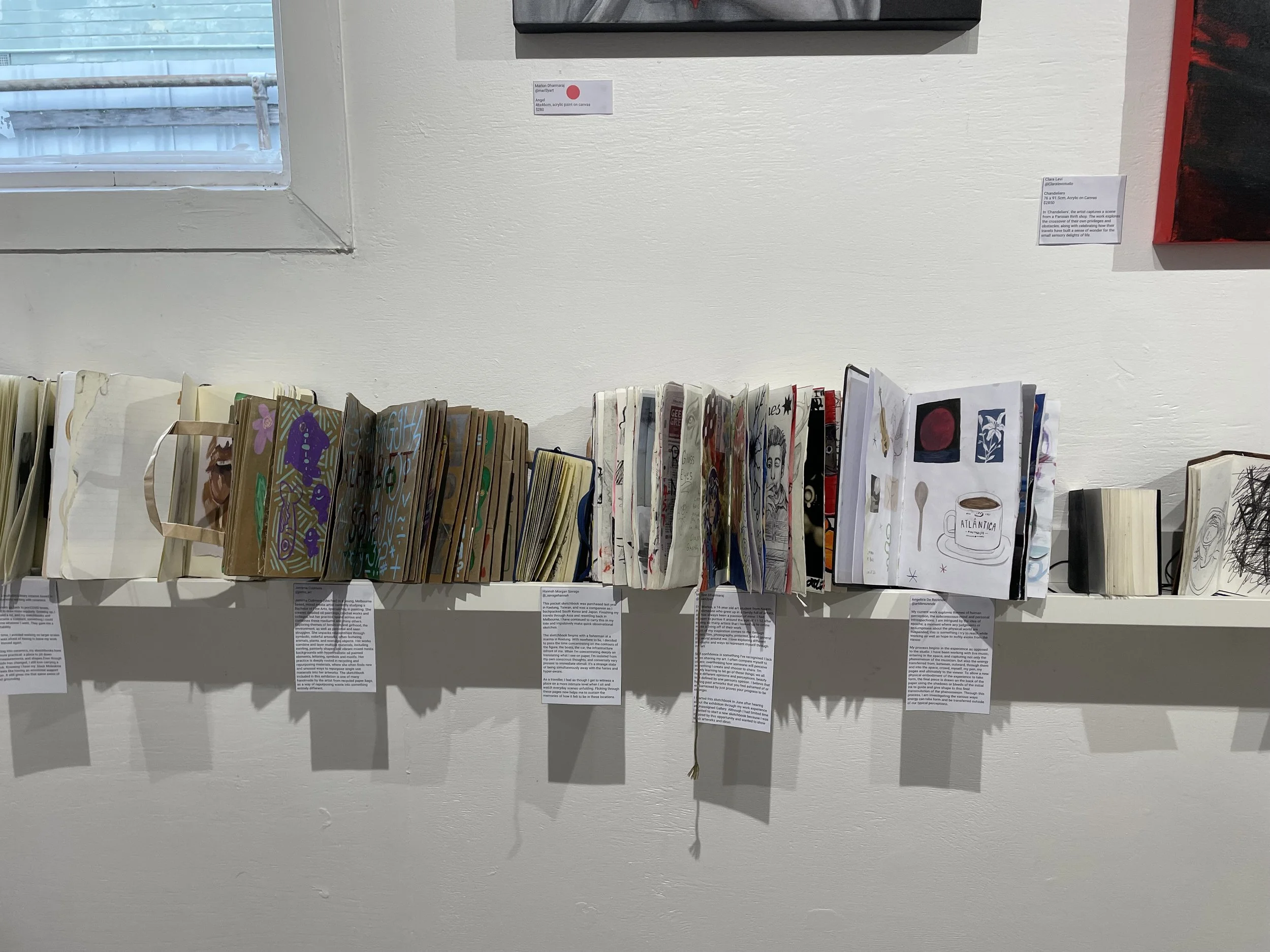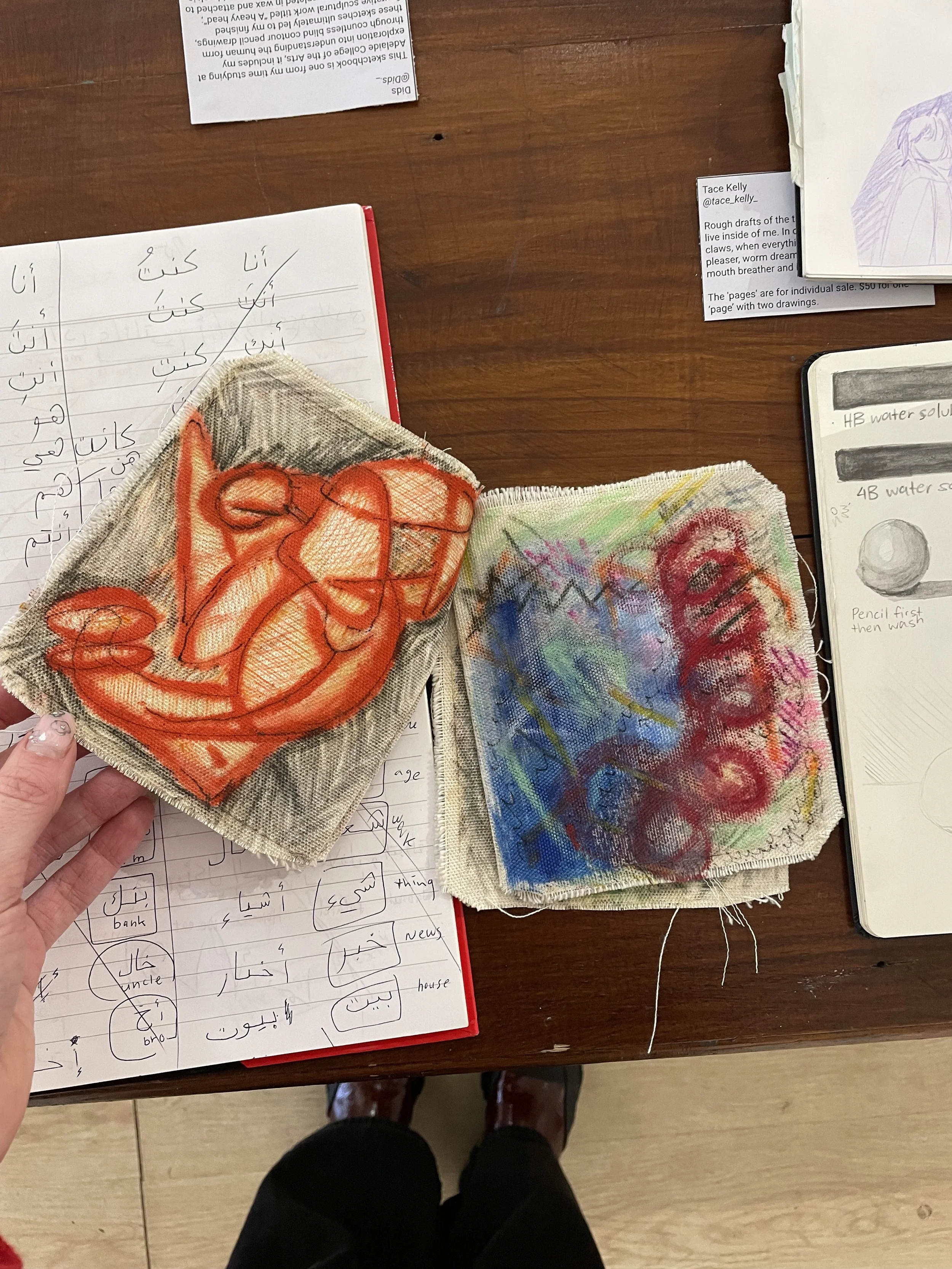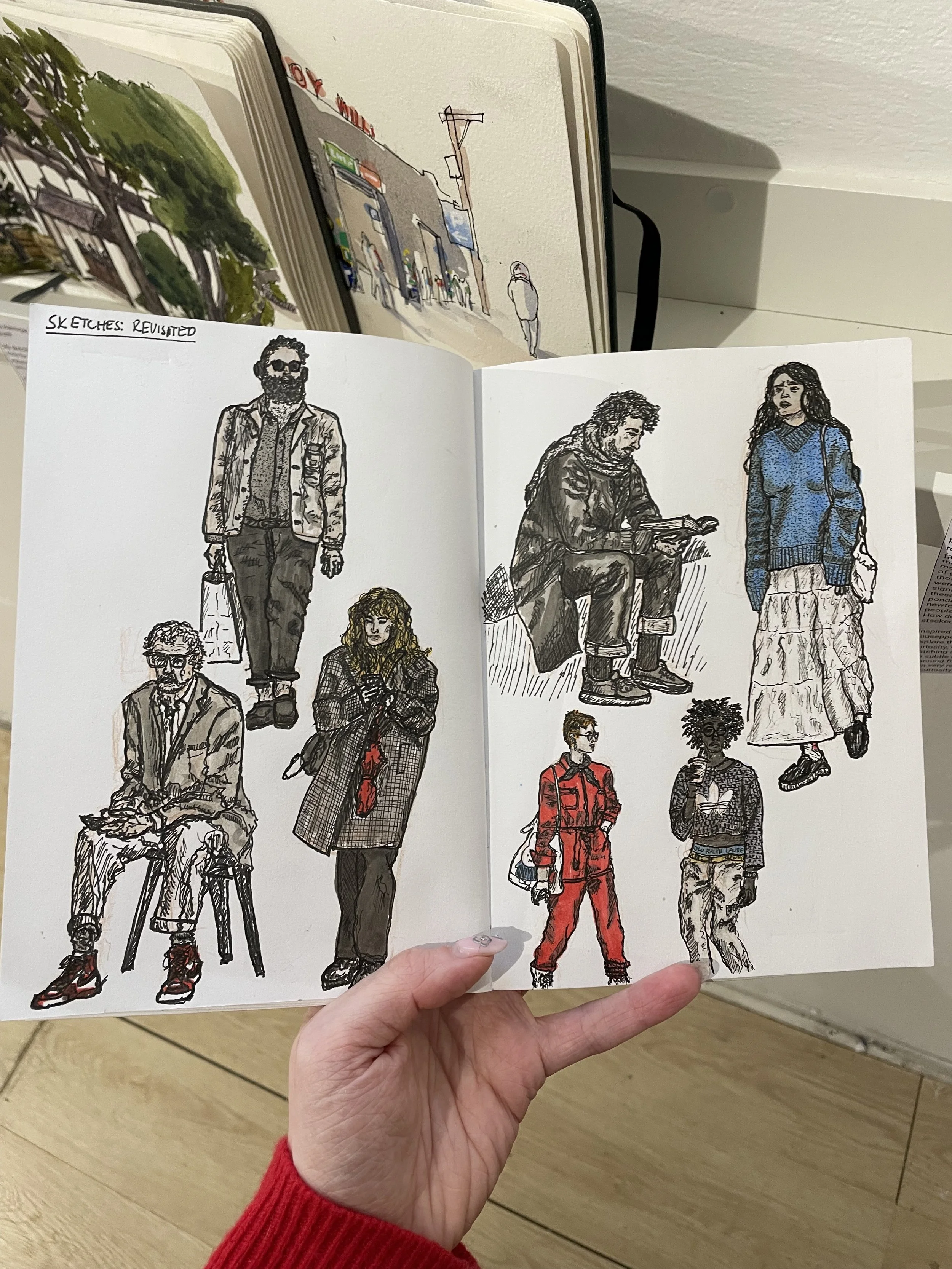SKETCHBOOK - Unassigned Gallery
A collaboration between Unassigned Gallery and Changing Room Gallery, SKETCHBOOK is ambitious, with this edition featuring over 40 artists. Lining the walls and multiple tables, the books run the gamut of artistic practice, stretching the limits of what a sketchbook is and can be. They are insights into how people see the world, and everything they encounter from the everyday to the imaginary.
When entering the gallery and faced with the sheer number of works, I knew I needed guidance. For that I asked Jeremy, who was manning the front desk. He took me through the exhibition, giving me insight into his favourites. I found it hard to get into a rhythm looking at the sketchbooks, and wouldn’t have had the positive experience I did without Jeremy’s guidance. The exhibition felt almost impenetrable, if just for the sheer number of books and the lack of table space to set them down on. I was drifting between them in a way I usually drift in permanent collections. The 40+ sketchbooks compared to available surface area meant there was no space to set them down and flip through them without risking damaging others. Despite the airiness of Unassigned, it felt crowded, with the lives of the artists taking up the room.
My time spent in the exhibition felt eye opening- artists playing with forms and mediums that are more expansive that what you would think a sketchbook could hold. Jemima Cudmore’s sketchbook was an art piece in and of itself. I never expected to be captivated flipping through a Woolies bag. Her “Alphabet Soup” page was fun and irreverent, and her jellyfish played with the folded lines, embracing the sketchbook’s former life.
To me, a sketchbook has always been a work in progress. A space to work and rework, much in the same way I write and rewrite in my own journal. Rhys Wilson plays with this- through sketch after sketch of strangers. Towards the end of the book is “Sketches: Revisited”, where Wilson has gone back and reworked them. This, much like Cudmore’s experiment with form, feels like a work that could take on a larger life. Through this you are able to see the artist play and rethink over the course of the book.
Tace Kelly’s work of fabric was one of two works of which I immediately thought “surely this can’t be a sketchbook.” I’ll be the first to admit I was wrong. The pages (each one individually for sale) play with form, and though attached together, do feel like distinct works. Though you might think this is antithesis to what a sketchbook should be (disparate but held together by the bounds of a book), sketchbooks should be, at their core, where experimentation and play can occur. The colours Kelly works with, the sketchiness of some lines and the boldness of others makes the work one that is worth taking your time with.
The work I had the most trouble reconciling with the idea of being a sketchbook was Publista’s, which is entirely the written word. Reading like poetry it challenged the idea of what a sketchbook can be more so than anything else in the exhibition. The more I read their words, and the more I have thought about it and revisited my notes on the work since, the more I think it stands out as the defining work of the exhibition. It is everything I look for in art- it speaks boldly, unflinchingly, and challenges you.
Sketchbook is the show that has stayed with me most that I have seen in recent months- in the weeks since I’ve seen it I’ve journalled about it, called my Mum about it, and written and rewritten this review. My afternoon at Unassigned was well spent, if just for the amount of time I’ve spent thinking about it since. The open call for the exhibition allowed for a breadth of creativity that follows in the footsteps of Unassigned’s previous shows (see Bec Gynes’ review of The Q Files for more). The scope of artistry demands your time, and for you to look closely. The exhibition is best experienced by letting yourself leaf through the books you feel most drawn to- trying to get to all of them is simply information overload.
SKETCHBOOK is on at Unassigned Gallery until the 17th of August.
Written by Charlotte McKinnon



